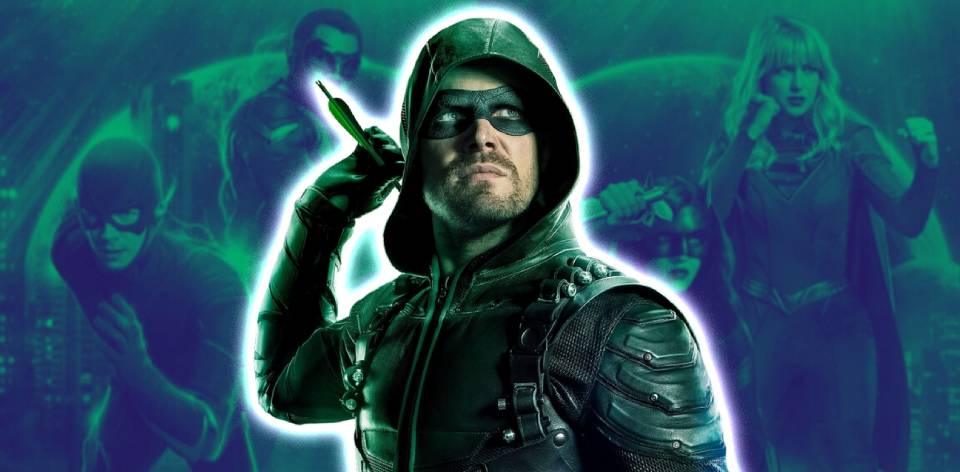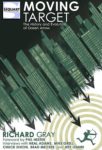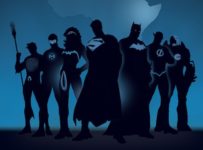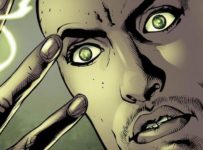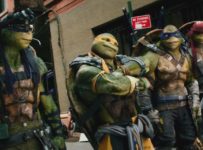When ARROW was launched in 2012, it did everything it could to not be a comic book series. Despite borrowing storylines from Batman lore, the ‘no capes, no powers’ policy ensured it had more in common with contemporary melodrama than comics. Eight years later, the character concluded his run by leading one of the biggest superhero crossovers in the history of the medium. That journey wasn’t always an easy one.

It will come as no surprise to anybody who has read my stuff that I am a little bit of a fan of Green Arrow. So when a series was first announced back in 2012, I was equal parts excited and trepidatious. After all, for every Batman: The Animated Series there was a Mutant X.
The CW itself had just come off the back of Smallville, a decade long origin story for Superman that never quite put him in the cape. While Green Arrow had turned up in that show, his bright green suit and modern shades never quite gelled with my mental version of Oliver Queen, the Green Arrow’s civilian identity.
So, for his first starring role in media in over 70 years, he would become someone else. He would become something else.

ARROW began a loose but spiritually faithful adaptation. Oliver Queen (Stephen Amell) returns to his native Starling City after spending five years on a “hellish island,” or so we’re led to believe, after which he becomes the hooded vigilante known variously as the Hood/Vigilante/The Arrow/Green Arrow as the show progresses. The show initially sets up the titular character as an anti-hero, primarily concerned with hunting down a list of people his father had given him who had “failed” the city.
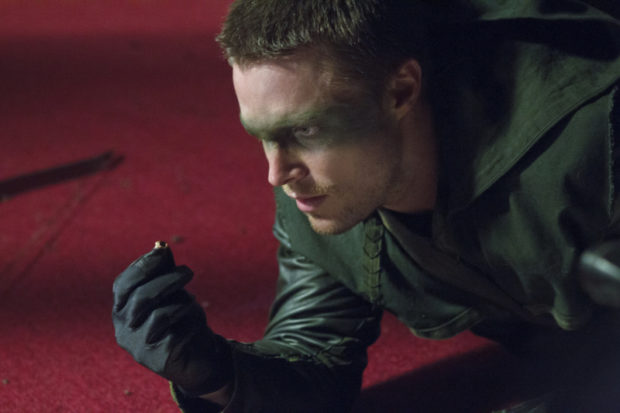
Dubbed “The Vigilante” by the media, and actively hunted by the police, he slowly lets people into the fold, including his ‘driver’ John Diggle (David Ramsey), his tech guru Felicity Smoak (Emily Bett Rickards) and eventually a supporting crew known as Team Arrow, fighting crime as the city’s hero. Yet for the first season at least, the show plays to the conventions of a CW soap drama just as much as it does an action series. Meanwhile, Ollie’s origin story played out through a series of flashbacks that served as a B-story for much of the show’s run.
The brave and the bold
Things began to turn during the second season “The Scientist,” a backdoor pilot that introduced Barry Allen (Grant Gustin) and ultimately the first spin-off show: The Flash. Thus began an annual crossover that didn’t just acknowledge the existence of a larger world, but began actively constructing one. By the time the show ended, it was part of a shared universe with Supergirl, Legends of Tomorrow, Batwoman, Constantine, and Black Lightning.
The proximity to the Scarlet Speedster and the Girl of Steel began to rub off on ol’ Ollie, and we even saw him smile once in a while. Stories became more ambitious, allowing some ‘meta’ heroes and villains and eventually abandoning the prohibition on capes. Mind you, it would still take another few years before the show allowed itself to call its hero “Green Arrow.”
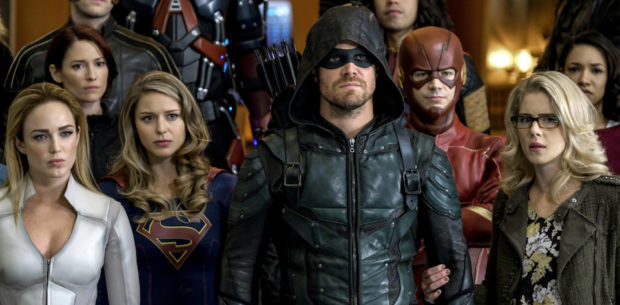
Interconnected universes are all the rage now, but it’s hard to overemphasise how unique this construction has become. Outside of Dick Wolf’s (Law & Order, Homicide, Chicago P.D. etc) shared universe, ARROW‘s most significant contribution to television is creating a baseline from which all these other shows grew. To put that in multiversal terms, it’s the Earth-Prime of modern DC Comics superhero shows.
READ MORE: Review: Arrow – Season 4
In the same way that comic books often gave homes to orphan characters that didn’t have a larger enough audience for their own title, ARROW served as a launching pad or home for other characters. The fourth season saw the show double-down on magic by pitting Green Arrow against Damien Darkh (Neal McDonough), the enhanced semi-immortal ex member of the League of Assassin, along with introducing the previously animated Vixen (Megalyn Echikunwoke) into the live-action universe. It also integrated the NBC orphaned John Constantine (portrayed by Matt Ryan) into the Arrowverse in the episode “Haunted.”

“Yeah buddy, I know…”
Social justice has been a part of Green Arrow’s makeup since the 1960s, most prominently on Denny O’Neil and Neal Adams’ Hard Travelling Heroes (1970 – 1972) run and later Judd Winick’s arc (2003 – 2008). While neither series were directly adapted to the screen, the spirit of representation was present in the entire Arrowverse.
Much of that has to do with mega-producer Greg Berlanti, who oversaw no less than 15 shows in the 2019–20 season. From the beginning, he was committed to diverse and representative casts, shining a light on voices often neglected by mainstream superhero media. He discussed this approach with Deadline in a 2019 interview:
“We weren’t doing each one to be a first of this or a first of that. We wanted the worlds of the stories we were telling to reflect our world—just as we do for a lot of our shows, even the ones that don’t have capes. We want the stories to feel, as much as possible, like they are taking place in a world that we all live in.“
Indeed, by the last few seasons Team Arrow was one of the most diverse casts on television. Canary Sara Lance was openly bisexual. Curtis Holt/Mr. Terrific is African American and gay. This approach extended into other Arrowverse shows as well: Sara Lance and Anissa Pierce (Nafessa Williams) have taken lead roles in shows like Legends of Tomorrow and Black Lightning, while Supergirl had a prominent ‘coming out’ storyline for Alex Danvers (Chyler Leigh) before introducing Nia Nal (Nicole Maines), the first transgender superhero on television.
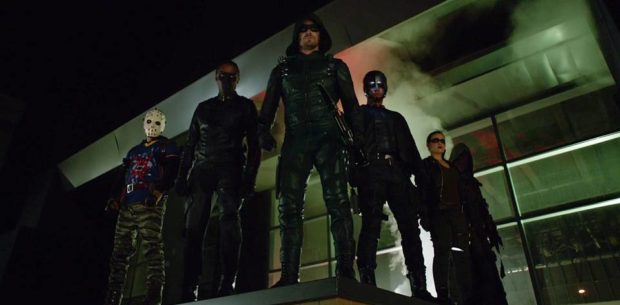
So, when Oliver’s son William (Ben Lewis) travelled back in time from 2040 and came out to his dad in Season 8, it never felt anything less than an organic part of the show. Indeed, Ollie’s response to his son coming solidified his position as the ultimate woke hero: “Yeah buddy, I know… we just, well we hoped that you were gonna come out to us when you were comfortable. You clearly didn’t get that chance. And, that’s on me so, I’m sorry.”
While certain social media hate groups continue to decry any form of diversity in superhero media, ARROW and its brethren demonstrates that social justice is in its DNA. After all, as a leftie from way back, you don’t want to get on Ollie’s hate list and fail this fandom.

You have saved this franchise
Which isn’t to say that ARROW was always great television. After all, the claim of ‘important’ doesn’t always come with consistent quality. If I’m being honest, there are entire seasons that chaotically went from one plot to another without settling on a single theme. Hampered by flashbacks, and eventually flash forwards, ARROW increasingly became tied to form where its counterparts just seemed to be having more fun.
Take the penultimate season, for example. In Season 7, which began with a prison plot that was loosely based on the aborted Green Arrow: Super Max screenplay, it covered a lot of ground: the introduction of half-sister Emiko Queen (from Jeff Lemire’s comic book run), perpetual flash-forwards to the future of 2040 and a whole lot of foreshadowing of the Crisis of Infinite Earths.
READ MORE: Crisis on Infinite Earths and the success of DC on TV
Yet it was the latter that gave the show the finale it deserved. With a laser focus in Season 8 on the coming Crisis, the 10-episode season was both a celebration of the character and the universe it spawned. Its ending not only gives Ollie a hero’s death but a hero’s victory that quite literally rewrote the DC television universe as we know it. It also paved the way for the future with “Green Arrow and the Canaries,” a backdoor pilot where his daughter takes up the mantle.
In the time that ARROW was on the air, its comic book counterpart struggled, was rebooted a couple of times and, at the time of writing, is not actively in print. The TV series may have had its ups and downs, but its stability allowed a whole television universe to flourish out of its shadows. When the history of superhero television is written, it will hopefully be remembered as the shot across the bow that signalled the start of something new.
Elements of this article referenced my book, Moving Target: The History and Evolution of Green Arrow from Sequart Publishing. This article is pretty much the unofficial 14th chapter of that book, so if you want to learn more then please buy a copy! It contains interviews with the comic creators and a complete look at the first 75 years of his history.

